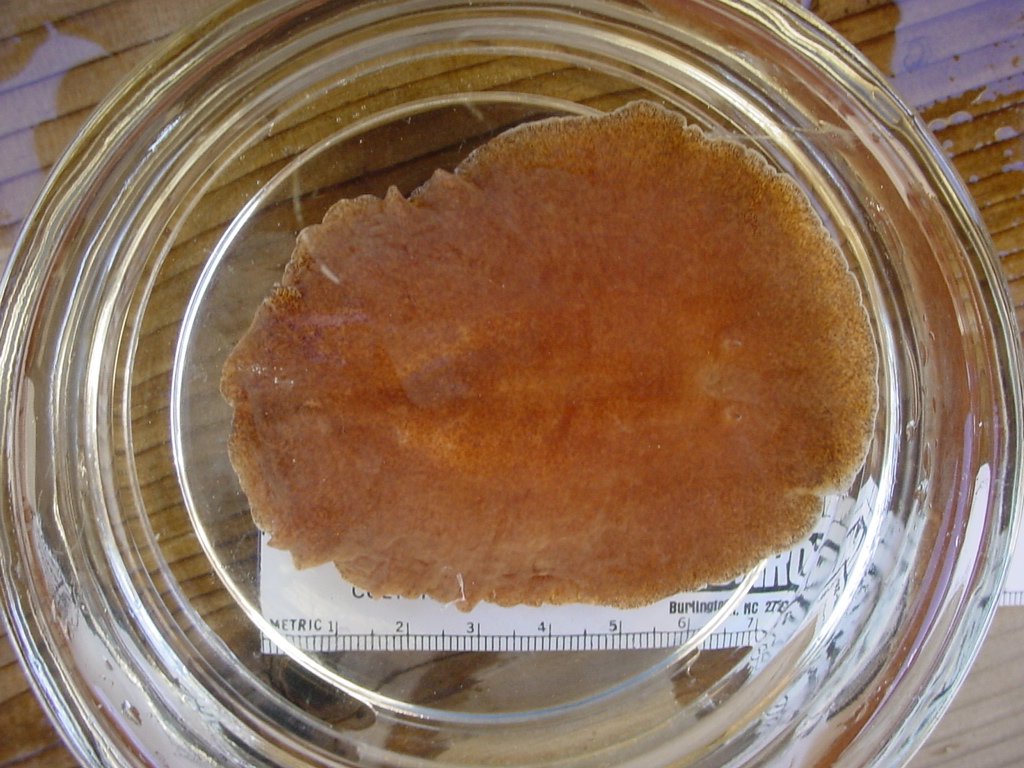Kaburakia excelsa Bock, 1925Common name(s) Giant flatworm, Giant leaf worm |
|
| Synonyms: |  |
| Phylum Platyhelminthes
Class Turbellaria Order Polycladida Family Stylochidae |
|
| Kaburakia excelsa, about 9 cm long. Found under a rock on Sares Head, Rosario Bay | |
| (Photo by: Dave Cowles, June 2003 | |
How to Distinguish from Similar Species: This species if far larger than any other species in this area, and is one of the largest in the world. Most other flatworms in this area are up to only about 3 cm long. Polyclads are the only group of flatworms in our area that get larger than microscopic size.
Geographical Range: Sitka, Alaska to Newport Harbor, CA. A M.S. thesis by Josè Ànhel Diosdado Anaya from La Paz near the southern tip of the Baja California Peninsula in Mexico (See reference below) reports finding several individuals in the subtropical waters near La Paz. The thesis contains photos of the external and internal anatomy.
Depth Range: Mid-intertidal to subtidal.
Habitat: Among mussels and under rocks, sometimes on pilings or on boat bottoms among fouling organisms.
Biology/Natural History: The tentacles are just in front of the brain and can be retracted. This animal is negatively phototactic. The margins of the body wrinkle as the animal moves (see photo above). Will eat mussel tissue in the laboratory. In Washington, gravid individuals can be found in March. 150-160 golden yellow eggs are laid individually in capsules, in a tight-packed monolayer or bilayer on rocks.
| Return to: | |||
| Main Page | Alphabetic Index | Systematic Index | Glossary |
References:
Dichotomous Keys:
Kozloff,
1987
General References:
O'Clair
and O'Clair, 1998
Morris
et al., 1980
Kozloff,
1993
Scientific Articles:
Josè Ànhel Diosdado Anaya, 2006. Revisiòn taxonòmica de Policlàdidos (Platyhelminthes: Turbellaria) de la Bahìa de La Paz, Baja California Sur, Mèxico. M.S. thesis, Instituto Politecnico Nacional, La Paz, Baja California Sur, Mèxico. (Spanish). 81 pp.
General Notes and Observations: Locations, abundances, unusual behaviors, etc.:
This species is uncommon. In many summers of intertidal study I have found only one and a colleague had found none.

This photo of the anterior end as the animal tries to climb the side of the bowl shows the nuchal tentacles and the dorsal and ventral pigmentation.

Authors and Editors of Page:
Dave Cowles (2004): Created original page